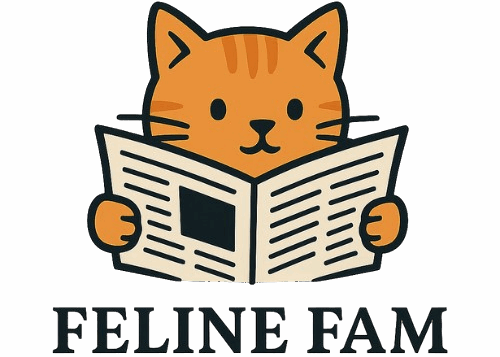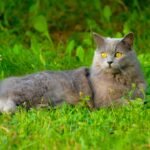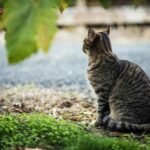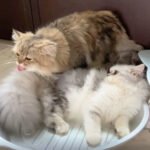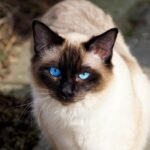Every veterinarian has their stories. The breeds that make them wince internally when new owners walk through their doors, eyes full of hope and excitement. These aren’t tales of mean cats or difficult personalities. They’re stories about breeds bred for beauty at the cost of basic comfort, where the very features that make them Instagram-worthy also make them prone to suffering.
The reality is harsh but needs to be said: some of our most beloved cat breeds carry genetic burdens that turn routine veterinary visits into expensive, heartbreaking ordeals. While mixed-breed cats typically live long, healthy lives, certain breeds face serious health issues due to their susceptibility to genetic conditions. So let’s get started on the breeds that make veterinarians quietly wish people would reconsider their choices.
The Scottish Fold – Beauty That Comes With Crippling Pain

Those impossibly cute folded ears that make Scottish Folds look like teddy bears? They hide a devastating secret. The genetic abnormality affects not only the ear cartilage but also cartilage in the joints as well, leading to crippling arthritis and chronic pain.
This is a dominant trait, meaning all Scottish Folds have it. The worst of its effects include the fusing of the joints within the tail, ankles, and knees, resulting in abnormally short, misshapen, inflexible limbs. The pain can be enough to deter cats from engaging in normal behaviors, such as jumping and walking.
Persian Cats – When Flat Faces Mean Struggling to Breathe

Two-thirds of these fluffy cats suffer from at least one health condition as a consequence of their limited gene pool. Their adorable smushed faces create a cascade of problems that extend far beyond appearances.
Persian cats are among a class of cats known to be brachiocephalic, meaning they have a short skull. Unfortunately for many Persians this translates frequent respiratory issues, eye issues, and skin issues, if that wasn’t enough they can sometimes carry the gene for polycystic kidney disease (PKD) which leads to unmitigable kidney failure.
Bengal Cats – Wild Genes, Serious Heart Problems

These spotted beauties may look like miniature leopards, but their exotic appearance comes with hidden cardiovascular dangers. Bengals are also prone to hypertrophic cardiomyopathy (HCM), a hereditary feline heart disease that’s marked by the thickening of the heart muscles. This leads to a domino effect of health issues, including lethargy, difficulty breathing, an increased risk of congestive heart failure.
The irony is bitter: cats bred to look wild and powerful often struggle with basic activities due to heart problems. Many Bengal owners discover these issues only when their seemingly healthy young cat suddenly becomes lethargic or starts breathing heavily after minimal activity.
Manx Cats – The Price of Taillessness

The Manx cat, known for its taillessness, has a captivating charm. However, this unique feature can be a double-edged sword. Manx cats are prone to spinal problems due to their genetics, which can lead to severe discomfort.
The same genetic mutation that removes their tail also affects their spine. Some Manx cats develop what’s called Manx Syndrome, where spinal defects can cause difficulty walking, bowel control issues, and chronic pain that only worsens with age.
Munchkin Cats – Short Legs, Long List of Problems

They look like kittens forever, but this perpetual baby-like appearance masks serious mobility concerns. The Munchkin, with its distinctive short stature, looks like a perpetual kitten. But behind the cuteness lies a concern: their skeletal structure can lead to joint and spine issues.
Think of it like forcing a person to spend their entire life walking on their knees. The unnatural leg proportions put constant stress on their spine and joints, leading to premature arthritis and mobility problems that only get worse with time.
Siamese Cats – Neurological Issues Behind the Blue Eyes

Their piercing blue eyes and vocal personalities make them beloved companions, but Siamese cats carry some surprising health risks. While Siamese cats do not have many physical health problems, they are prone to neurological issues including a type of obsessive compulsive disorder.
These cats are also more likely to develop compulsive behaviors like excessive wool-sucking or over-grooming. Some Siamese cats may also face breathing difficulties due to their elongated facial structure, making them more sensitive to anesthesia during medical procedures.
Maine Coon – When Size Becomes a Burden

America’s gentle giants seem robust and healthy, but their impressive size creates its own set of challenges. These cats face problems due to their size, as with males typically weighing 13-18 pounds and some reaching over 20 pounds. This can lead to problems with hip and elbow dysplasia. They also have heart problems.
The very genes that make them magnificently large also predispose them to joint problems and heart disease. Many Maine Coon owners are shocked to discover their seemingly robust cat needs expensive hip surgery or cardiac medication before reaching middle age.
Sphynx Cats – Hairless Means Helpless Against the Elements

Sphynx cats, bred to be hairless, often suffer from chronic ear and skin problems and the inability to stay warm because the fur that they lack was intended to protect their ears and skin and to help regulate body temperature.
These cats require daily sunscreen in summer, heated beds in winter, and frequent baths to manage the oils that normally would be absorbed by fur. Their exposed skin is prone to acne, blackheads, and various infections that coated cats never face.
Himalayan Cats – Persian Problems Plus More

Essentially long-haired Siamese with Persian faces, Himalayans inherit the worst health problems from both breeds. Himalayan cats’ flat faces can cause breathing problems and make them sensitive to heat. Himalayans may also have polycystic kidney disease (PKD), which can lead to kidney failure.
Their combination of breathing difficulties and kidney problems makes them particularly challenging for new cat owners. The grooming requirements alone are intensive, but add in the potential for expensive medical interventions, and these cats become a significant commitment few people are prepared for.
The Reality of “Designer” Breeding

The heartbreaking truth is that purebred cats are suffering from debilitating genetic conditions as a result of being treated like commodities to be produced. Meanwhile, animal shelters overflow with healthy mixed-breed cats desperately needing homes.
Veterinarians see the consequences of breeding for appearance over health every single day. The cutest features often signal the most serious problems, and owners who thought they were getting a perfect pet instead find themselves facing thousands in medical bills and watching their beloved companion suffer.
Conclusion

The breeds on this list aren’t inherently bad choices, but they require owners who understand the commitment involved. If you’re drawn to a specific breed, research extensively, find ethical breeders who health test their cats, and prepare financially for potential medical expenses. Better yet, consider the countless healthy mixed-breed cats waiting in shelters.
Your future feline companion doesn’t need pedigreed features to be perfect. Sometimes the most beautiful cats are the ones whose genetics haven’t been manipulated for human preferences. What do you think about it? Tell us in the comments.
